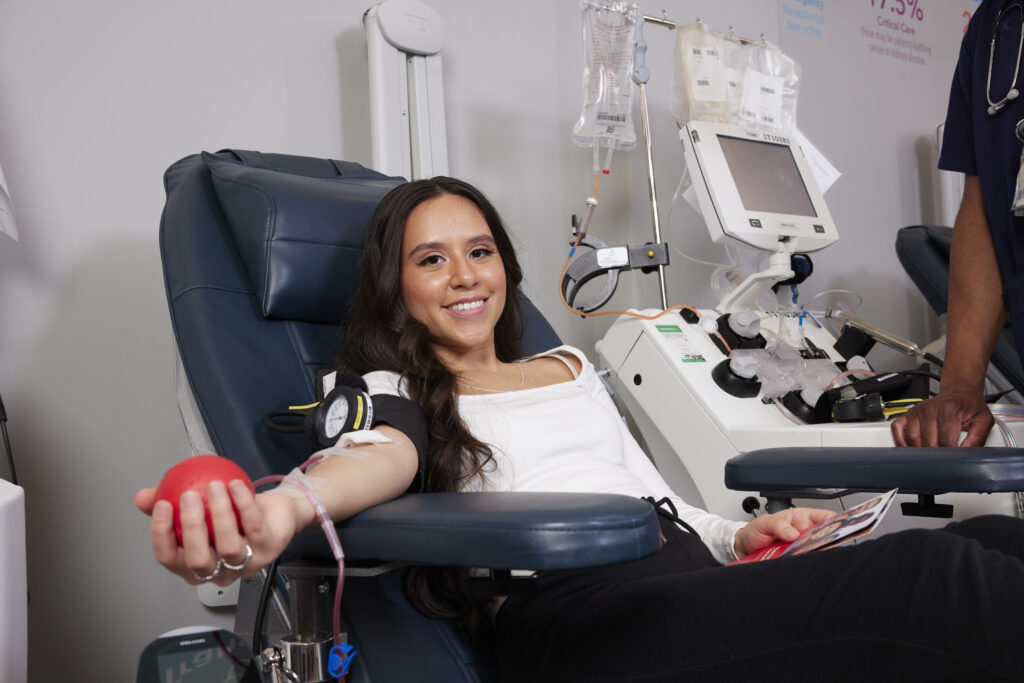
From the Emergency Room to the Operating Room, red blood cells often mean the difference between life and death for patients requiring blood transfusions—the most frequent hospital procedure.
- Approximately 10+ million units of red blood cells are transfused every year in the U.S.
- Donated red blood cells expire after 42 days and supplies must be continuously replenished.
- Many premature infants require up to four transfusions to survive; and mothers are at risk of needing blood during or after childbirth.
- Burn and accident victims or people suffering massive blood loss can require 50 units of red blood cells or more.
- People living with anemia and blood disease need ongoing transfusions to survive.
Double red cell donors make it possible to meet current demand—and future patient needs.
How does the donation process work?
Unlike a whole blood donation, where you give whole blood with all three blood components—double red cell donations use a special automated process called apheresis (AYfur-EE-sis) to collect two units of just red blood cells during a single donation. Apheresis uses a cell separator that collects red cells by spinning the blood during your donation, separating the red cells from the other blood components. It then safely returns your plasma and platelets—along with a saline solution—to you. The saline solution will help keep your body’s blood volume balanced, and you will likely feel better than if you donated whole blood.
How long does the process take?
A double red cell donation takes up to 20 minutes longer than a whole blood donation. In a single appointment, you can give more and save more lives in about 80 minutes.
How often can I donate double red cells?
You can make a double red cell donation every 112 days (approximately every four months.)
Are there special eligibility requirements?
In addition to general blood donor requirements, double red cell donors must meet the following minimum requirements for weight, height, and hemoglobin. Donors must sign an additional consent form for a double red cell donation.

Why are requirements different for men and women?
Total blood volumes are different between men and women, even for individuals equal in height. As a result, the FDA has established specific requirements for each gender.
Double the difference you make
Talk with one of our donor specialists at 1.888.8.BLOOD.8 or schedule an appointment to make a double red cell donation today.
